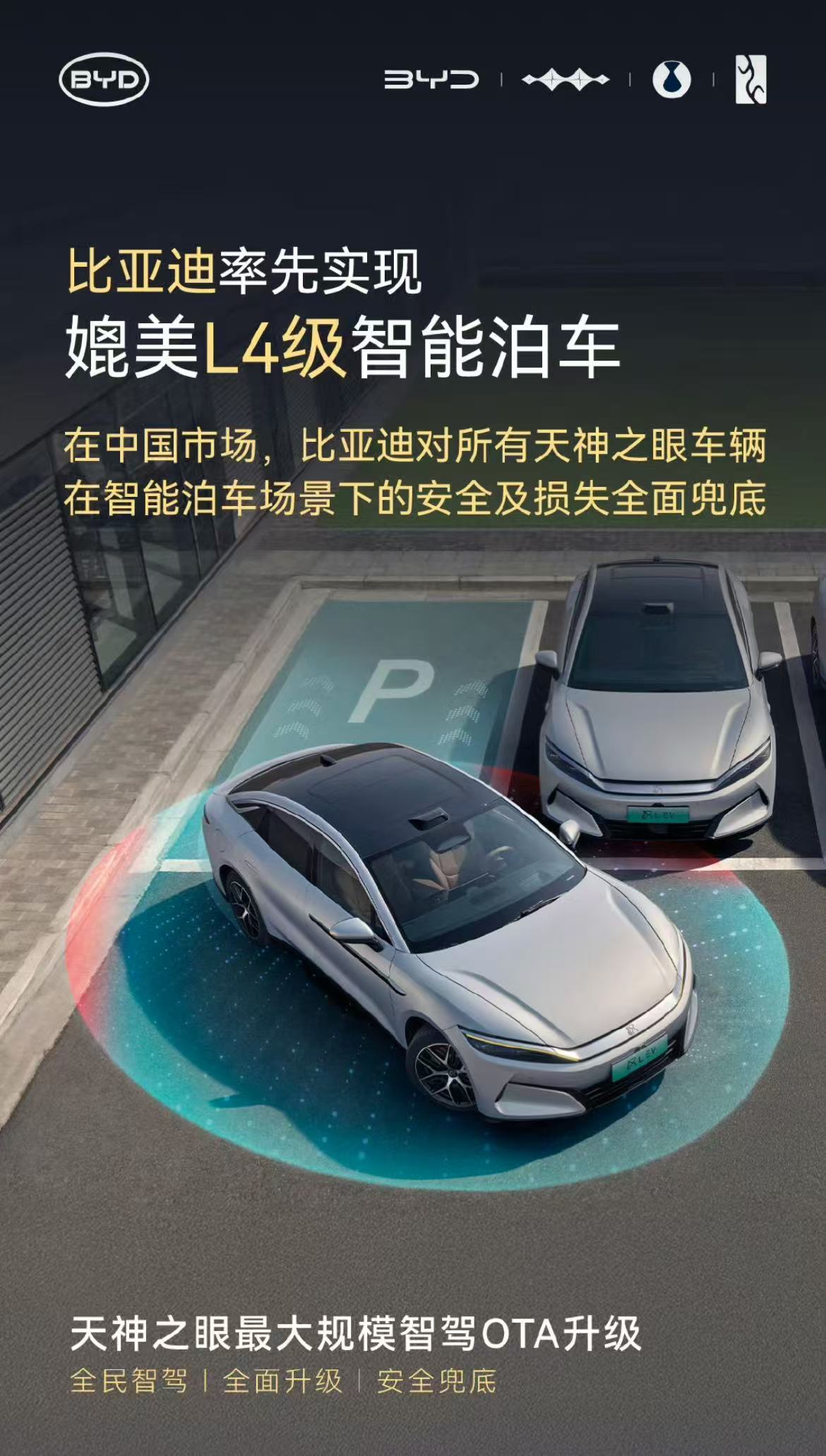On July 9, BYD announced that it has become the first to achieve smart parking capabilities comparable to L4 level and has committed to fully covering the safety and loss for all 'Tianshen Eye' vehicles in smart parking scenarios in the Chinese market. According to internationally recognized classification standards, intelligent driving is divided into five levels from L1 to L5, with L4 allowing drivers to 'take their hands off, eyes off, and brain off' under specific conditions, where the car manufacturer assumes liability in case of accidents. Currently, intelligent driving often faces vague boundaries in liability assignment. BYD's announcement regarding the 'Tianshen Eye' vehicles means that for accidents caused by the parking assistance system malfunctions or algorithm errors, BYD will bear the repair costs, third-party property losses, and personal injury expenses that are legally or judicially determined to be the car's responsibility, excluding any additional payments for reconciliation or settlements, and excluding compensation that the vehicle owner, manager, or user must bear due to legal violations. This clarification of liability rights means that users in the smart parking assistance scenario do not need to go through insurance processes and can directly contact BYD's after-sales service for resolution. BYD officials stated that the biggest benefit for users is that it will not affect next year's insurance rates, and premiums will not increase. Additionally, BYD announced that it will soon conduct the largest-ever OTA upgrade for the 'Tianshen Eye' system, covering over ten features across three major areas: parking, driving, and safety, affecting multiple vehicle models across the Tianshen Eye A/B/C platforms. In terms of parking, new features include three-speed parking, front-in parking, offset parking, and automatic mirror folding for tight spaces, along with optimized obstacle recognition functions. For driving, the Tianshen Eye can cover more scenarios such as navigating roundabouts, continuous detours in complex scenes, emergency lane bypassing in highway construction zones, and multi-point U-turns in narrow roads, along with a new warning feature for vehicles cutting in front. In safety, the AEB function of the Tianshen Eye can more easily identify low obstacles and achieve emergency braking for two-wheeled vehicles entering the lane at speeds of up to 80 km/h, and it can also perform a two-stage comfortable stop at 120 km/h. Currently, over 1 million 'Tianshen Eye' intelligent driving vehicles have been produced by BYD.
BYD Achieves L4-Level Smart Parking and Guarantees Safety for 'Tianshen Eye' Vehicles

Share this post on: